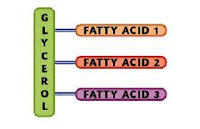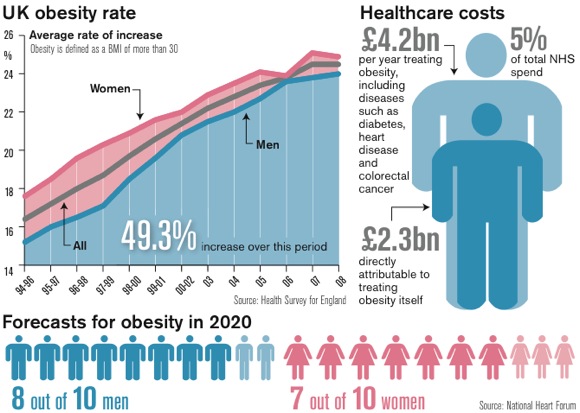Week 5- Fat Functions
Fat Functions:
In previous week we have already looked at the role of omega-3 and cholesterol in the body. This week we are going to overview functions of lipids in the body and ensure we have a full understanding and appreciation of their importance to living things.
1. Lipids are a an incredible source of energy for living organisms. Gram for gram fats release twice as much energy as carbohydrates and it also releases valuable water in the process. In order to become a fuel for respiration triglycerides are split into their main substituent parts; glycerol and fatty acids. For those of you that are familiar with the process of cellular respiration the glycerol molecule is split and is incorporated into the glycolysis pathway and the 3 fatty acid chains are also split by enzymes before joining the krebs cycle. The reason fats release more energy is because as the fatty acids are broken down they are oxidised, losing hydrogen. These hydrogen ions are useful in other places in respiration process and are used to drive it forward.
2. As lipids contain more energy per gram than carbohydrates they are a much more efficient energy store in the body, which is why we store excess, unused energy in fat cells. If we were to carry the same energy stores in carbohydrate form we would be much heavier. Fats are also insoluble and non-polar meaning they don't affect water potential, so storage doesn't cause fluid build up.
3. Lipids are insoluble in water and so a have a natural ability to be used for waterproofing. Insects and plants monopolise on this ability by covering their bodies and leaves with waxy lipids that prevent water being lost too rapidly. Many mammals and birds that regularly interact with water produces oily secretions from sebaceous glands on the skin to cover their fur or feathers and provide a waterproof layer. This ensures water cannot reach their skin keeping them warm, creates a smooth and impermeable surface to improve their streamlining and prevents their fur or feathers from becoming waterlogged, which would make them heavy and cumbersome, like a human swimming in pyjamas.
4. Lipids are are poor conductors of heat and so are essential for insulation. This can be seen evidently in new born babies, who are born with excess fat to protect them against hypothermia. This can also be seen in marine mammals that live in cold oceans, who have a layer of blubber, a thick layer of fat cells, under their skin.
5. Lipids also have the ability to cushion and protect organs and so they often surround delicate organs like the kidneys.
6. A family of lipids called phospholipids are the primary component for cell membranes. Without them cells could not repair, multiply or grow. Phospholipids have a very similar structure to triglycerides, but one fatty acid chain is replaced by a phosphate group. This creates a molecule with a hydrophilic (water loving) head of the glycerol and phosphate and hydrophobic (water hating) fatty acid tails. These molecules line up into a double layer, tails facing each other and heads pointing out, called a phospholipid bilayer. This bilayer is an effective cell membrane as it doesn't let water or water soluble substances pass through at will. They are force to pass through protein channels in the membrane and so their entry and exit can be controlled.
7. Vitamins A, D, E and K are fat soluble vitamins, so fat is required for them to be absorbed into the body. If taking vitamin tablets you should take the tablet with a meal or drink a glass of milk, for example, to support absorption. Vitamin A is also known as Retinol and is important for a strong immune system, vision in dim light, and healthy skin and linings or areas like the nose. Vitamin D regulates the amount of calcium and phosphate in the body which in turn are needed for healthy bones and teeth. Vitamin E is integral the healthy cell membranes and vitamin K is needed for blood clotting.
8. A type of lipid called myelin is essential for the nervous system. Myelin is provided by a number of different type of cells, the most common being Schwann cells. These cells wraps themselves around the long axon of neurons and insulates them, similar to plastic on a wire. This insulation enables the electrical impulses travel quicker through neurones and throughout the body whilst preventing the signal from leaking out.There are regular gaps called nodes of ranvier, in the myelin sheath which the signal jumps between, which is how it increases the speed of the impulse. This means large organisms can still communicate with distant parts of their bodies efficiently.
Task:
In previous week we have already looked at the role of omega-3 and cholesterol in the body. This week we are going to overview functions of lipids in the body and ensure we have a full understanding and appreciation of their importance to living things.
1. Lipids are a an incredible source of energy for living organisms. Gram for gram fats release twice as much energy as carbohydrates and it also releases valuable water in the process. In order to become a fuel for respiration triglycerides are split into their main substituent parts; glycerol and fatty acids. For those of you that are familiar with the process of cellular respiration the glycerol molecule is split and is incorporated into the glycolysis pathway and the 3 fatty acid chains are also split by enzymes before joining the krebs cycle. The reason fats release more energy is because as the fatty acids are broken down they are oxidised, losing hydrogen. These hydrogen ions are useful in other places in respiration process and are used to drive it forward.
2. As lipids contain more energy per gram than carbohydrates they are a much more efficient energy store in the body, which is why we store excess, unused energy in fat cells. If we were to carry the same energy stores in carbohydrate form we would be much heavier. Fats are also insoluble and non-polar meaning they don't affect water potential, so storage doesn't cause fluid build up.
3. Lipids are insoluble in water and so a have a natural ability to be used for waterproofing. Insects and plants monopolise on this ability by covering their bodies and leaves with waxy lipids that prevent water being lost too rapidly. Many mammals and birds that regularly interact with water produces oily secretions from sebaceous glands on the skin to cover their fur or feathers and provide a waterproof layer. This ensures water cannot reach their skin keeping them warm, creates a smooth and impermeable surface to improve their streamlining and prevents their fur or feathers from becoming waterlogged, which would make them heavy and cumbersome, like a human swimming in pyjamas.
4. Lipids are are poor conductors of heat and so are essential for insulation. This can be seen evidently in new born babies, who are born with excess fat to protect them against hypothermia. This can also be seen in marine mammals that live in cold oceans, who have a layer of blubber, a thick layer of fat cells, under their skin.
5. Lipids also have the ability to cushion and protect organs and so they often surround delicate organs like the kidneys.
7. Vitamins A, D, E and K are fat soluble vitamins, so fat is required for them to be absorbed into the body. If taking vitamin tablets you should take the tablet with a meal or drink a glass of milk, for example, to support absorption. Vitamin A is also known as Retinol and is important for a strong immune system, vision in dim light, and healthy skin and linings or areas like the nose. Vitamin D regulates the amount of calcium and phosphate in the body which in turn are needed for healthy bones and teeth. Vitamin E is integral the healthy cell membranes and vitamin K is needed for blood clotting.
8. A type of lipid called myelin is essential for the nervous system. Myelin is provided by a number of different type of cells, the most common being Schwann cells. These cells wraps themselves around the long axon of neurons and insulates them, similar to plastic on a wire. This insulation enables the electrical impulses travel quicker through neurones and throughout the body whilst preventing the signal from leaking out.There are regular gaps called nodes of ranvier, in the myelin sheath which the signal jumps between, which is how it increases the speed of the impulse. This means large organisms can still communicate with distant parts of their bodies efficiently.
Task:
- In your paper notes condense each of the 8 fat functions above into a one sentence bullet point.
- Now decide which you think is the most important role of fats and explain your choice in the comment section below.
Fat fanatic:
Multiple sclerosis is a condition where by the myelin sheath of neurons is broken down. Find out what the implications are for individuals with this condition. http://www.nhs.uk/conditions/Multiple-sclerosis/Pages/Introduction.aspx
The article linked below looks at biomimicry; how we have been inspired by nature to design new materials. The final page looks at the hydrophobic waterproofing on lotus leaves. https://www.stem.org.uk/system/files/elibrary-resources/legacy_files_migrated/8515-catalyst_20_4_452.pdf












